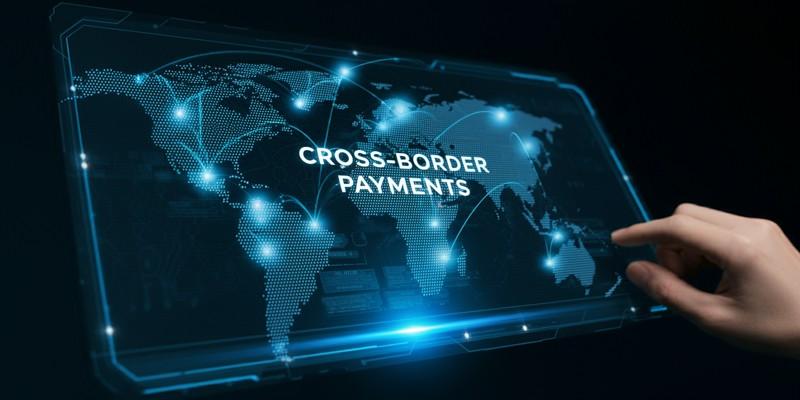While trade continues to develop in all countries globally, e-commerce, in particular, has not seen such a dire need for improved efficiency and safety concerns as it experiences today. You face several challenges with each international transaction: exorbitant charges, slow speeds, and obscurity over the process flow. However, help from emerging technologies in this area works wonders- coming out with workable solutions for making cross-border payments more operational and promising than before.
The Rise of Cross-Border Payments

Since cross-border payments have today become part of the ever-escalating development seen in the globe's economy, unparalleled growth has nevertheless continued to take place in recent years. With corporations opening up their operation businesses across borders and consumers acquiring e-commerce worldwide, demand for additional practical and relatively affordable international solutions began emerging.
Globalization and Digital Commerce
Another of the most influential factors in forming cross-border payments is the fast pace of the globalization process. Having efficient cross-border transactions has become the norm as organizations aim to expand and look for opportunities in foreign locations. On the other hand, digital commerce is steadily emerging from its limitations and allowing consumers to purchase items and services from markets all over the globe, thus increasing the demand for cross-border payment solutions.
Challenges in Traditional Systems
Traditional banking mechanisms move exceptionally slowly when demand increases exponentially for cross-border payments. Legacies, infrastructural challenges, and multi-level intermediary banks have primarily contributed to making them sluggish, hugely costly, and opaque. Thus, inefficiencies in various parts created enormous scope for new technologies to disrupt existing architecture in the cross-border payment space for improvement.
Emergence of Fintech Solutions
Ironically, these very challenges have spurred the development of a new generation of cross-border payment solutions—led by alternative financial technology companies, or fintech firms. Key technologies driving this transformation include blockchain, artificial intelligence, and cloud computing. Additionally, unprecedented innovation is taking place in international transaction-processing platforms that operate outside traditional banking channels. This approach facilitates cross-border payments that are faster, cheaper, and more transparent than those relying on conventional systems.
How Technology is Transforming Cross-Border Payments
New technologies underpin the fundamental shift of the entire landscape of cross-border money transfers. It is how firms and individuals transfer money abroad-abroad- more manageable and safer than before.
Blockchain
The major actors in this revolution are blockchain. Since blockchain networks can process transactions independently on a peer-to-peer basis, with no intermediaries involved, the networks can radically reduce long processing times and associated high fees required for traditional cross-border payments.
Artificial Intelligence and Machine Learning
AI and machine learning algorithms improve the speed and safety of cross-border payments, which could be enabled by:
- Real-time detection and blocking of fraudulent transactions.
- Providing optimized currency conversion rates.
- Ease of compliance processes that include know your customer.
Application Programming Interfaces (APIs)
- APIs act as a catalyst in increasing the connectivity of financial systems across different parts of the world. This is attributed to the fact that APIs let different software applications converse with one another to track payments in real time and carry out instant conversions of currency;
- Integrate services of payment on various platforms and applications
Mobile Payment Solutions
Only the spread of smartphones finally made various mobile payment solutions possible. Backed by near-field communication and QR codes, these platforms allow users to execute cross-border payments directly using mobile devices. In such a way, today, cross-border money transfers are possible just by tapping the screen a couple of times, thus democratizing global financial services for individuals and businesses.
Blockchain Technology and Cross-Border Payments

Revolutionizing International Transactions
Blockchain technology is poised to revolutionize cross-border payments by introducing a decentralized yet highly secure method of transferring money internationally. This advanced technology utilizes a distributed ledger that records transactions across a network of computers, enhancing transparency and traceability while significantly reducing the potential for fraud.
Enhanced Security and Traceability
This makes blockchain technology appealing for cross-border payments because of its inbuilt security. Besides being linked to previous transactions, transactions are cryptographically sealed, which makes records practically unalterable. Adding security would increase trust among participants while reducing the risk of cyber attacks or fraudulent activities.
The traceability introduced by blockchain brings further transparency into the process of paying. All parties see in real-time how a transaction is developing; thus, there is value in insight for areas that have raised uncertainties in more traditional forms of cross-border payment.
Smart Contracts and Automated Compliance
The blockchain further facilitates smart contracts, essentially agreements between two parties with pre-defined rules. Such contracts help automate several cross-border payment elements, including currency conversions, fee calculations, and compliance checks. They reduce manual intervention errors and smoothen the process.
Mobile Wallets and Cross-Border Payments
Mobile wallets have changed how we view domestic transactions in the last couple of years. Now, they are all set to change the game in cross-border transactions. This technology presents a convenient, efficient, and often cost-effective alternative to traditional international money transfer methods.
The Rise of Mobile Wallets in International Transactions
Mobile wallets have become the no-brainer in cross-border payments. People will definitely avoid using more cash or visiting any bank to perform the transactions, having the possibility to store, send, and receive money on their phone and mobile wallet. Since the availability of smartphones and mobile internet is growing in people's reach in different parts of the world, so is the scope of mobile wallets for international transactions.
Benefits for Consumers and Businesses
Some of the many benefits to leveraging a mobile wallet for cross-border payments will come in the speed of transactions, superior fees to the consumer that can send money to friends and family abroad with the tap of their phone, optimized business processes with reduced operational cost, and ease to an expanded global customer base.
Conclusion
In one way or another, technological advancement is sure to revolutionize cross-border payments. Promising technologies like blockchain, AI, APIs, and digital currencies can resolve some of the most contentious matters linked to cross-border transactions. Simplified processing times, low cost, high transparency, and high safety are among the advantages that financial institutions and business entities may expect when they adopt such financial solutions.












